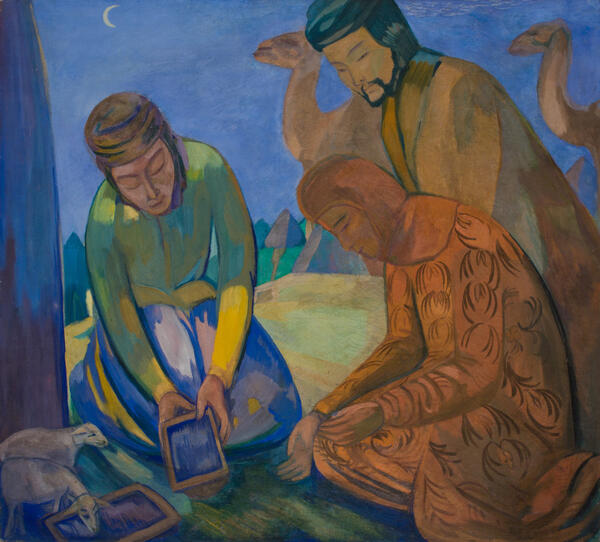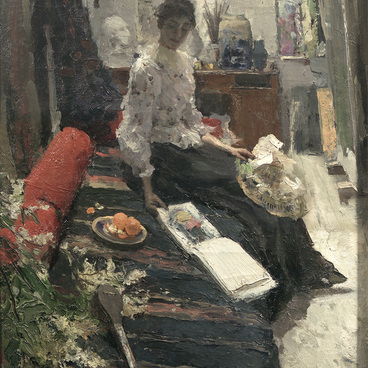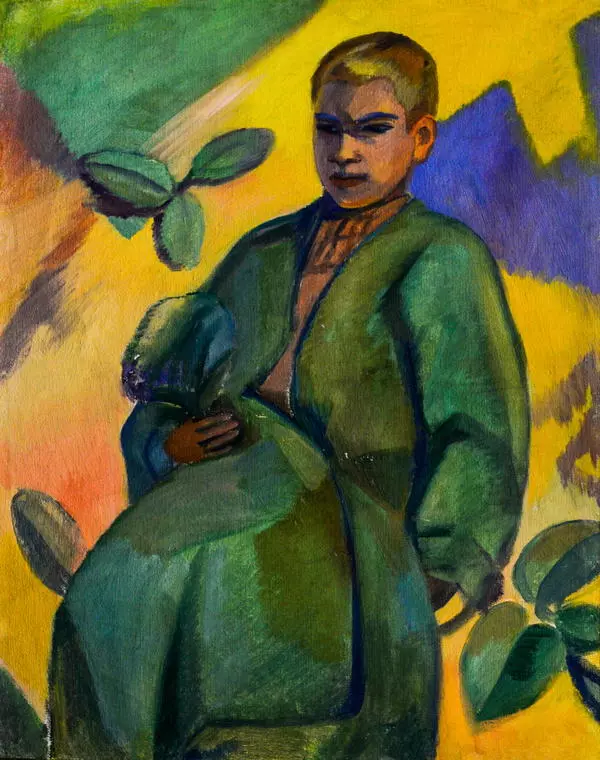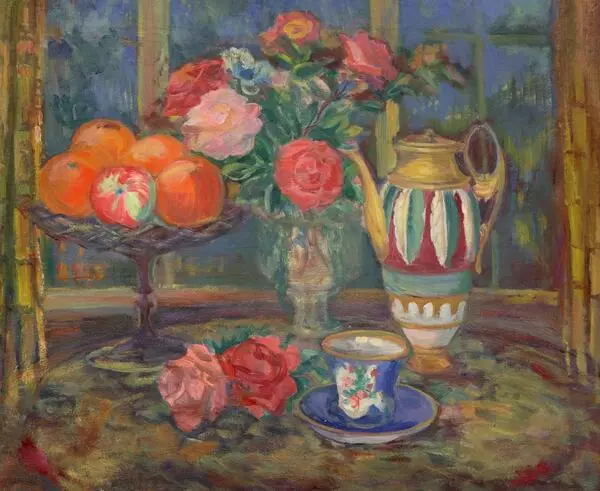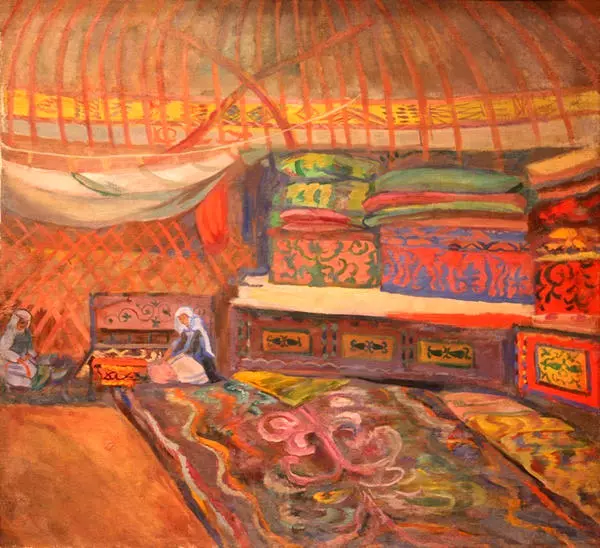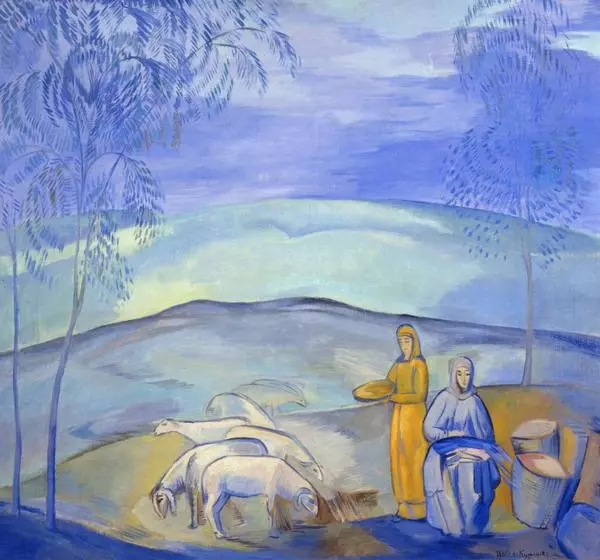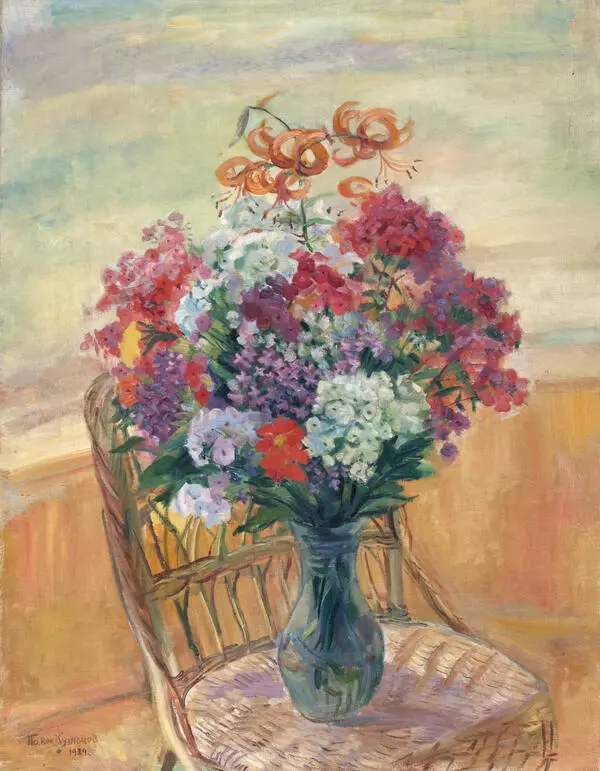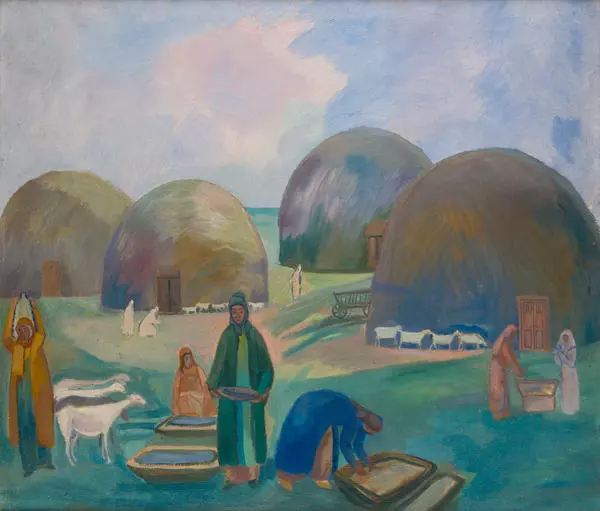The beginning of the 20th century Russian art was marked by the emergence of various styles, ‘-isms’ and numerous creative associations. Pavel Kuznetsov is one of the outstanding figures in Russian painting of the 20th century. He studied at the Moscow School of Painting, Sculpture and Architecture, and knew personally Konstantin Korovin and Valentin Serov. He was greatly influenced by his acquaintance with Viktor Borisov-Musatov. Subsequently, thanks to the legacy of this artist, Kuznetsov became one of the leaders of the symbolist artists’ association “Blue Rose”.
The work “In the Steppe” by Pavel Kuznetsov belongs to the brightest period in his work. It was created in 1912, during the artist’s trips to steppes of the Zavolzhsky District and Central Asia. In Moscow, the artist was a member of several creative associations such as ‘The World of Art’ and ‘Four Arts’. However, despite the great demand, by the 1910s he felt a crisis of artistic searches. From the suffocating life of the cities, Kuznetsov decided to leave for the Kyrgyz steppes. The trip to Asia gave him the opportunity to rediscover himself and see new paths in art.
The presented work ‘In the steppe’ was brought from the Volga region and is devoted to the life of nomad Kazakhs, as the Kyrgyz were called at that time. In depicting the steppes, Kuznetsov was looking for the integrity of the universe. In the boundless expanses of Kyrgyzstan, everything is brought to unity: trees, animals and people with their homes. The painting seems to take people into the world of harmony and boundless space. There is no border between heaven and earth, man and the Universe. The artist repeatedly turned to the same themes: evenings in the steppe, shearing of rams or sheep. In this work, the proportions of the characters are deliberately violated: people become several times larger than sheep, which symbolizes the superiority of man over what is happening. Symbolist artists admired the freedom of a person living in the steppe. The nomadic way of life forced them to think about their path and the eternal race for success and material benefits. The dominant color in the work is blue and its shades. Kuznetsov was a symbolist for whom the blue color is a symbol of the transcendent and otherworldly. Symbolist artists looked for inspiration in the world of dreams or from the eastern and steppe peoples. Kuznetsov strove to create works that reflect not so much the impressions of the world but a particular state of mind, transporting his audience from the material world into the world of ideas.
The work “In the Steppe” by Pavel Kuznetsov belongs to the brightest period in his work. It was created in 1912, during the artist’s trips to steppes of the Zavolzhsky District and Central Asia. In Moscow, the artist was a member of several creative associations such as ‘The World of Art’ and ‘Four Arts’. However, despite the great demand, by the 1910s he felt a crisis of artistic searches. From the suffocating life of the cities, Kuznetsov decided to leave for the Kyrgyz steppes. The trip to Asia gave him the opportunity to rediscover himself and see new paths in art.
The presented work ‘In the steppe’ was brought from the Volga region and is devoted to the life of nomad Kazakhs, as the Kyrgyz were called at that time. In depicting the steppes, Kuznetsov was looking for the integrity of the universe. In the boundless expanses of Kyrgyzstan, everything is brought to unity: trees, animals and people with their homes. The painting seems to take people into the world of harmony and boundless space. There is no border between heaven and earth, man and the Universe. The artist repeatedly turned to the same themes: evenings in the steppe, shearing of rams or sheep. In this work, the proportions of the characters are deliberately violated: people become several times larger than sheep, which symbolizes the superiority of man over what is happening. Symbolist artists admired the freedom of a person living in the steppe. The nomadic way of life forced them to think about their path and the eternal race for success and material benefits. The dominant color in the work is blue and its shades. Kuznetsov was a symbolist for whom the blue color is a symbol of the transcendent and otherworldly. Symbolist artists looked for inspiration in the world of dreams or from the eastern and steppe peoples. Kuznetsov strove to create works that reflect not so much the impressions of the world but a particular state of mind, transporting his audience from the material world into the world of ideas.

